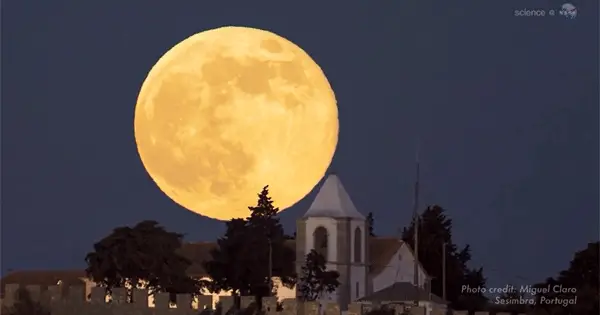If you hear your dog howling extra loudly into the night sky sometime soon it could be worth joining him in the garden. You will hopefully be treated to a spectacular sight.
On December 2 your sky is going to light up with the biggest full moon you are likely to see in a long time.

A super moon occurs because the moon doesn’t orbit the earth in a perfect circle. Instead it rotates along an oval path. When a full moon coincides with the point of the orbit that is closest to Earth we get a super moon (also known as a perigee, on the farthest part of its orbit the moon is known as an apogee).
December 2 will see the moon at the closest point of its orbit.
A super moon appears considerably bigger than a normal moon and depending on other factors such as the weather or the light it can look extremely impressive.
To get a good look at the supermoon, it is recommended to go to a viewing point away from the city lights to gain the maximum effect.
It is also a good idea to pick a view with some reference points on the horizon, such as trees or varied landscape, so that the size of the supermoon can be appreciated.
November 14 2016 saw the largest super moon for decades as the moon was at the closest point of its orbit around the earth.
A NASA spokesperson said: “The full moon of November 14 is not only the closest full moon of 2016, but also the closest full moon to date in the 21st century. The full moon won’t come this close to Earth again until November 25 2034.”
Here is a YouTube video created by NASA to explain what exactly supermoons are and why they occur.
The biggest , brightest supermoon of the year – don't miss it!
